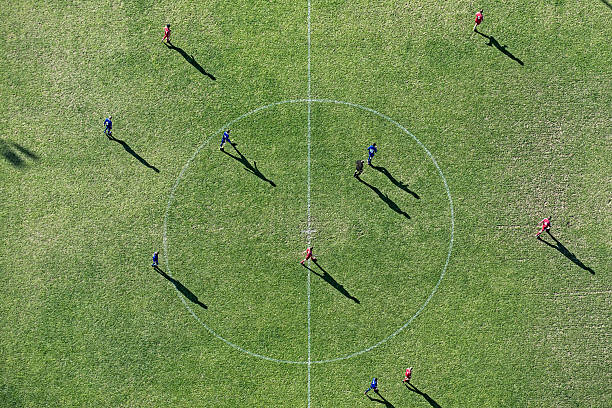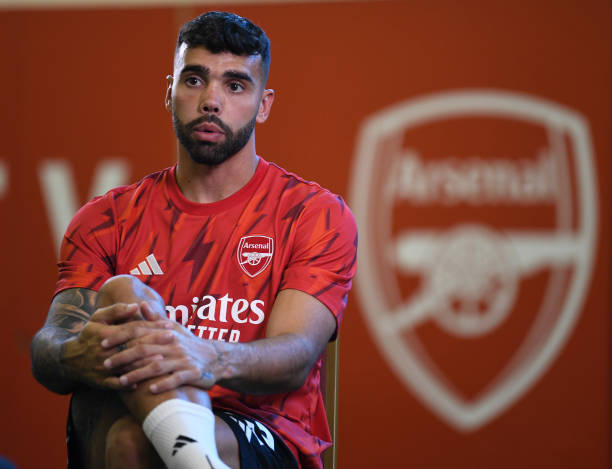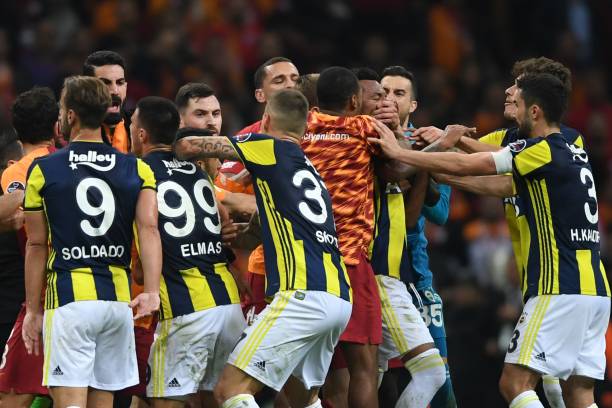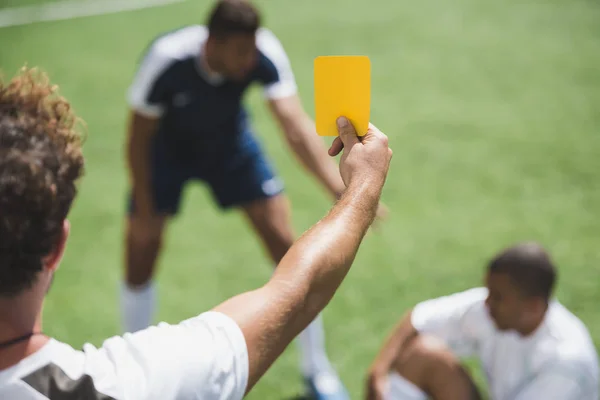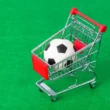Welcome to our deep dive into the world of soccer field materials! If you’ve ever wondered about the differences between natural grass and artificial turf for playing the most popular sport in the world, you’ve come to the right place.
We’re going to dissect the perennial turf vs. grass debate by examining the pros and cons of artificial turf and real grass for use in soccer fields. Whether you’re a soccer enthusiast, a groundskeeper, or an intrigued reader, we’re here to provide an engaging, informative, and accessible insight into the stuff that lies beneath those agile feet on the soccer field.
Why Field Material Differences Matter
When it comes to the beautiful game of association football, the material beneath the players’ feet is an often overlooked but significant factor. The choice between natural turf and synthetic grass can impact not only the aesthetics and environmental implications of a soccer field but also the performance and safety of the players.
This decision can influence injury rates, ball behavior, and even the endurance level of the athletes. Being aware of the pros and cons of grass and turf alike is essential for anyone involved in the sport, from players and coaches to facility managers and spectators.
Whether it’s the lush appeal of natural grass or the consistent, easy-to-maintain appeal of artificial turf, each form of soccer field material presents its own set of advantages and challenges.
Pros of Grass Fields
Here are the pros of a grass soccer field:
Natural Feel & Playability
One of the most significant advantages of grass fields is their natural feel. For soccer players of all ages and skill levels, the texture and responsiveness of natural grass is unparalleled.
The grass allows for a true roll of the soccer ball, which is often preferred by players for its predictability. Additionally, the softness of the grass provides a level of comfort during play, reducing the risk of abrasions in case of falls or slides. In other words, one of the best ways to feel like you’re playing “real soccer” is to use real grass.
Temperature Regulation
Another benefit of grass fields is their natural ability to absorb heat and maintain a comfortable temperature. Unlike fake grass, which can become extremely hot in the sun, real grass fields stay significantly cooler, providing a more comfortable playing environment for athletes.
This heat absorption also means grass fields are less likely to contribute to heat-related illnesses. This aspect can be particularly important in warmer climates or during summer games.
Environmental Benefits
Grass fields also offer environmental benefits that are worth considering. They serve as a natural habitat for local fauna and play a crucial role in carbon sequestration, helping to offset emissions and combat climate change.
What’s more, the natural grass and the soil beneath it assist with water filtration and drainage. This reduces the risk of water run-off and promotes a healthier ecosystem. These environmental advantages make grass fields a sustainable choice for soccer facilities worldwide.
Cons of Grass Fields
Here are the cons of a grass soccer fields:
High Maintenance Requirements
Grass fields, while providing numerous advantages, come with a higher maintenance requirement that can be a significant con for many soccer facilities. Keeping a grass field in prime playing condition requires regular mowing, watering, fertilizing, and potentially even reseeding.
This level of upkeep not only requires significant time and effort but can also incur substantial costs. Simultaneously, the need for chemical fertilizers and pesticides can raise environmental concerns, somewhat mitigating the natural benefits of grass fields already mentioned.
Weather-Related Issues
Another notable downside of grass fields for soccer play is their susceptibility to changing weather conditions. Heavy rain can turn a grass field into a muddy, slippery mess, making it unsuitable for play.
Water-logging can further damage the field, causing the grass to die off and leaving patches of bare, uneven ground that look unsightly.
On top of that, during colder months, grass fields can freeze over, creating an unsafe playing surface. The unpredictability of weather can significantly interfere with the usability and longevity of even the nicest of grass fields.
Uneven Surfaces and Injury Potential
While the natural feel of grass is often preferred by players, it’s worth noting that grass fields can potentially lead to uneven surfaces, especially when considered over time.
This is because natural grass can wear down in high-traffic areas, leading to divots and dips that can disrupt the roll of the ball and potentially increase the risk of player injuries.
Twisted ankles and falls are more likely on an uneven surface, and these potential risks need to be taken into account when considering a grass soccer field. Grass fields, therefore, require careful and frequent inspection to ensure they remain in a safe and playable condition all season long.
Pros of Artificial Turf
Below are the pros of an artificial sicc turf:
Consistency and Predictability in Play
One of the key advantages of installing artificial grass is its consistency and predictability in play. Unlike natural grass fields, which may have uneven areas due to wear and tear or weather conditions, artificial turf provides a uniform surface throughout the stadium.
This consistency means that the soccer ball’s movement is more predictable, enabling players to rely on their skills and strategy rather than adjusting to the unpredictability of the surface.
In addition, an artificial lawn does not suffer from the common issues of grass fields, such as weather-related damage or divots in high-traffic areas. This creates a more stable and reliable playing surface, helping to reduce the risk of injuries from falls or uneven surfaces.
A more consistent playing surface offers players the confidence they need to give their best performance in every match, regardless of the weather conditions.
Lower Maintenance and Cost-Effectiveness
Artificial lawns and fields are notably low-maintenance when compared with their natural grass counterparts. Unlike grass, artificial turf does not require regular mowing, watering, fertilizing, or reseeding. This greatly reduces the time, effort, and resources needed for upkeep by facility staff.
While it can cost a pretty penny to install artificial grass on the front end, the fact that artificial turf requires less in terms of ongoing maintenance makes it a cost-effective solution for many soccer facilities in the long run. No more significant spending on irrigation systems or regular fertilizers and pesticides!
This cost-effectiveness can be particularly advantageous for facilities that host regular games and tournaments, where field wear and tear can be high throughout the year.
Weather Resistance and Usability
Another significant advantage of artificial turf is its superior resistance to weather conditions. Artificial turf can withstand heavy rain without turning into a muddy, slippery quagmire.
Turf is designed with excellent drainage capabilities, allowing fields to remain playable even shortly after a heavy downpour. This means fewer game cancellations and more consistent playing schedules.
Moreover, artificial turf fields do not freeze over in cold conditions, which means they remain safe and usable year-round. This weather resistance, combined with the material’s overall durability, means artificial turf fields can endure constant use without degradation of the playing surface.
Cons of Turf Fields
Below are the cons of an artificial soccer turf:
Increased Risk of Injuries
Despite offering consistent playing surfaces, artificial turf fields are associated with an increased risk of certain types of injuries. Players might experience turf burns from sliding or falling on this synthetic surface, which can be painful and slow to heal.
Plus, the harder surface of artificial turf compared to natural grass may increase the risk of joint injuries. Studies suggest that the impact of landing on an artificial turf field can result in higher stress on the joints. This creates a greater potential for impact-related injuries, such as ACL sprains, ACL injuries, strains, and tears.
Thus, while artificial turf reduces the risk of injuries from divots or uneven ground compared to real grass, it introduces its own unique safety risks.
Heat Reflection and Higher Surface Temperatures
Another significant disadvantage of artificial turf is its tendency to absorb and reflect heat, leading to higher surface temperatures compared to natural grass. On hot, sunny days, the surface temperature of artificial turf can rise significantly above the ambient air temperature, creating an excessively hot playing environment.
This heat can be uncomfortable for players and may even lead to an increased risk of heat-related conditions, including heat exhaustion or heatstroke. While watering the turf field can help to reduce the surface temperature temporarily, this is a short-term solution that also adds to the maintenance requirements of the turf.
Lack of Natural Feel
Despite the technological advancements in artificial turf design, many players and fans argue that it lacks the natural feel of real grass. The texture and bounce of the ball on artificial turf can differ from that on natural grass, affecting the flow and tactics of the game.
It’s a simple fact that the aesthetic and tactile experience of playing on natural grass, from the smell to the feel underfoot, is something that artificial turf simply cannot replicate, at least not presently.
This lack of natural feel can detract from the enjoyment of the game for some, affecting the overall soccer experience. While artificial turf offers substantial benefits in terms of maintenance and weather resistance, these perks must be weighed against the potential drawbacks in player safety, comfort, and enjoyment.
Conclusion
Clearly, the debate between synthetic turf and natural grass lawns is multifaceted, with both materials presenting unique pros and cons. Artificial turf stands out for its consistency, cost-effectiveness, and weather resistance.
However, it also presents concerns regarding player safety, surface temperature, and lack of natural feel and appearance.
On the other hand, natural grass offers a traditional and natural playing experience but requires considerable maintenance and is subject to weather conditions.
Ultimately, the choice between turf and grass involves a balance between practicality and personal preference. Key considerations should include the climate, frequency of use, available resources for maintenance, and the preferences of both players and spectators.
By taking all these factors into account, you can make an informed decision that best fits your specific circumstances. This ensures that your choice of soccer field material serves the needs and enhances the enjoyment of all involved.


